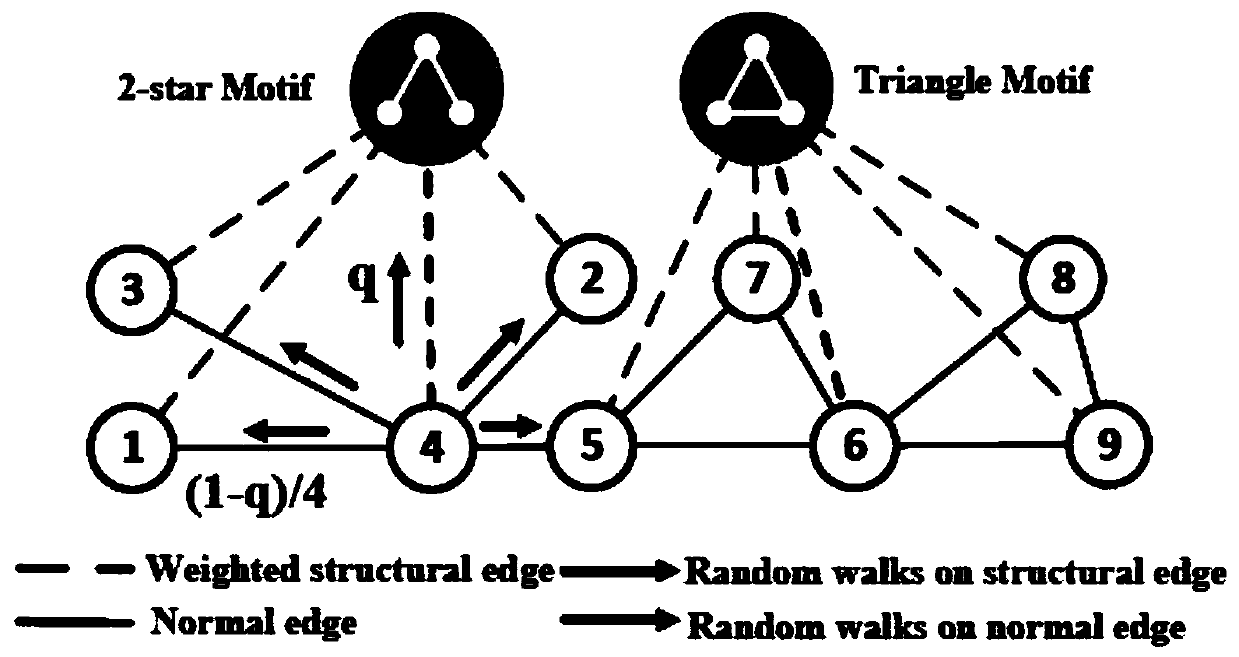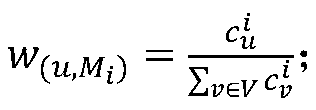Graph embedding learning method based on graph primitives
A learning method and graph embedding technology, applied in the field of graph embedding learning based on graph primitives, which can solve the problems of graph data, redundant noise and information loss that are not suitable for strong homogeneity
- Summary
- Abstract
- Description
- Claims
- Application Information
AI Technical Summary
Problems solved by technology
Method used
Image
Examples
Embodiment Construction
[0026] Embodiments of the present invention will be described in further detail below in conjunction with the accompanying drawings.
[0027] The graph embedding learning method based on graph primitives of the present invention is used to learn graph nodes and embedding vectors of various graph primitives, and the embedding vector learning and updating method expects to maximize the probability of simultaneous occurrence of nodes within the window size. The present invention inserts graph elements (Motif) of various different structures into the network as super nodes, and constructs a heterogeneous network composed of Motif super nodes and original nodes in the figure; in order to generate a corpus from a heterogeneous network, a method based on Motif's random walk strategy ensures that nodes with high connectivity or high structural similarity are relatively close in the corpus.
[0028] like figure 1 Shown, inventive point of the present invention is embodied in:
[0029...
PUM
 Login to View More
Login to View More Abstract
Description
Claims
Application Information
 Login to View More
Login to View More - R&D
- Intellectual Property
- Life Sciences
- Materials
- Tech Scout
- Unparalleled Data Quality
- Higher Quality Content
- 60% Fewer Hallucinations
Browse by: Latest US Patents, China's latest patents, Technical Efficacy Thesaurus, Application Domain, Technology Topic, Popular Technical Reports.
© 2025 PatSnap. All rights reserved.Legal|Privacy policy|Modern Slavery Act Transparency Statement|Sitemap|About US| Contact US: help@patsnap.com



